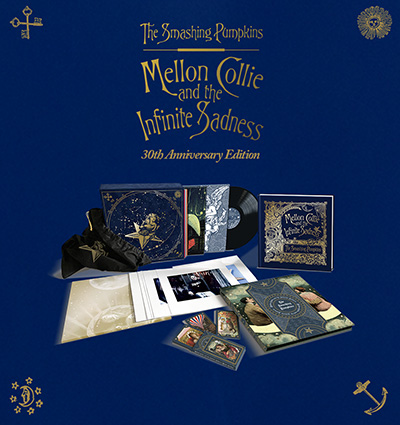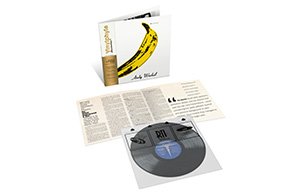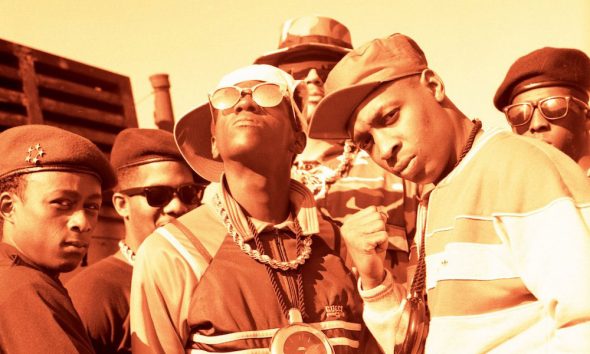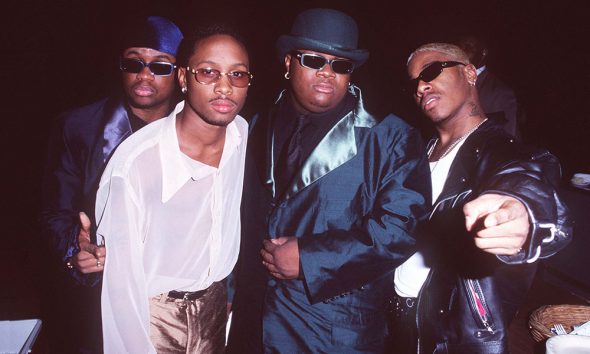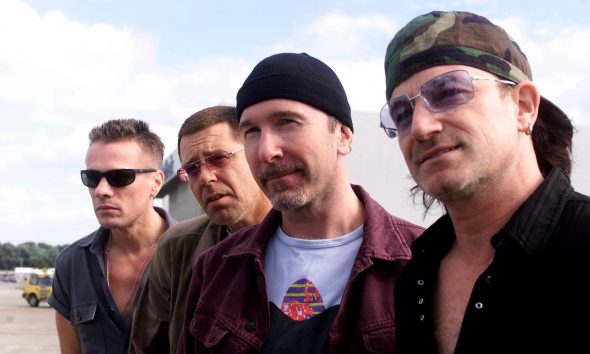New Wave Central: CBGBs And The Birth Of New York Punk
Rock clubs come and go, but there was only one CBGBs, the hallowed club for the New York punk scene that spawned many major music superstars.
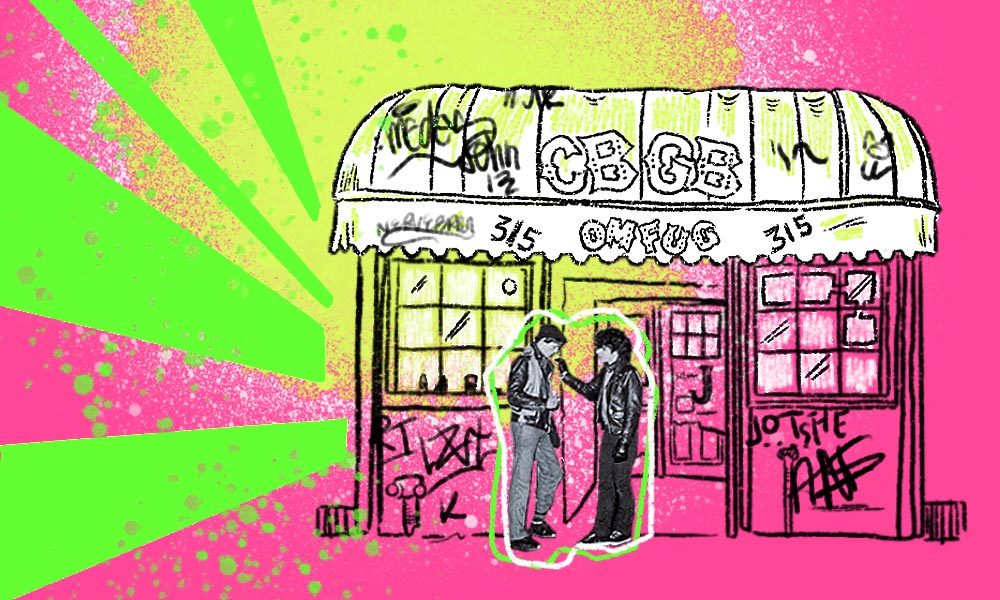
You’ve probably heard of CBGBs, but we’d wager you’ve never given a second’s thought to what the initials stand for. It might be one of the great misnomers in rock, because its name stood for Country, Bluegrass & Blues. But the initials CBGB would become completely intertwined with the American punk and new wave movement that coalesced inside its less-than-salubrious portals.
The club was opened by owner Hilly Kristal at 315 Bowery in New York’s East Village, on the intersection with Bleecker Street. This was late 1973, when the American mainstream rock scene was populated by the likes of Pink Floyd, Jethro Tull, and Elton John. The Hot 100 got about as dangerous as “Tie A Yellow Ribbon.” But a new kind of counter-culture was bubbling up from the underground, and CBGB was the club where it found a home and came out into the open.
This shadowy, dank and entirely unglamorous location incubated some of the most urgent, edgy and creative rock music ever performed. From Patti Smith to the Ramones, Television to Talking Heads and Blondie to Joan Jett, CBGB was the headquarters of cutting edge American music and the place where lifetime-long careers were born.
Think of CBGB and you think of cast-iron new wave classics like “Gloria,” “Blank Generation,” “Marquee Moon,” “Rip Her To Shreds,” and “Sheena Was A Punk Rocker.” All of those and many other anthems rang out from the CBs stage during the heady heyday of a venue that lasted 33 years, until Patti Smith played its closing show in October 2006. Less than a year later, Kristal himself was gone, taken by lung cancer at the age of 75. But what he created will stand forever.
The emergence of Hilly Kristal
By 1973, native New Yorker Kristal had been an important player on the New York club scene for more than two decades. From 1959, he ran the renowned Village Vanguard in Greenwich Village, a mile uptown from what became CBGB. A fixture in the Apple from the 1930s onwards, the Vanguard had been a jazz mecca since the 50s that hosted John Coltrane, Miles Davis et al, and is still part of Village life to this day.
After co-founding the Central Park Music Festival, Kristal opened his own bar, Hilly’s On The Bowery, which he lost in 1973 after complaints about noise levels. But soon he was good to go with his next endeavor. Its site had been the location of the derelict Palace Bar, in what was, in truth, a pretty run-down part of the Village. The rent was reasonable, but that was partly because there were about half a dozen flophouses within two blocks, containing about 2,000 alcoholics, the mentally impaired, Vietnam vets and so on.
Yet the growing local artist community made Krystal think he had a chance. When the new venue opened, the awning trumpeted those trademark initials, and underneath, another acronym just as initially baffling to passers-by: OMFUG. It stood for Other Music For Uplifting Gormandizers.
Those gormandizers, who had to bypass drunks and walk over prone bodies in the streets to get through the door in those early days, couldn’t have known how much they were about to be uplifted. The club was soon making its name as the location for young, untried talent to play – even if the first artists to turn heads there had precisely nothing to do with the country, bluegrass and blues that Kristal had envisaged.
Teething trouble on the Bowery
“When we came over here, there were a lot of artists on the Bowery, Lichtenstein, Rauschenberg, a whole lotta people,” Kristal said in Mike Evans’ Waking Up In New York City, published in 2003. “I knew a lot of people who played, so that was my intention. But…there weren’t really enough people to make it work, enough things to keep it going day after day here on the Bowery, which was a little bit different to how it is now. It was a mess.”
Indeed, the very early acts to play at CBGB drummed up precious little business or attention. The country-folk artist Elly Greenberg, the Maine-based Con Fullum Band, and street group the Wretched Refuse String Band did nothing to dissuade Kristal from the notion that he’d made a big mistake. But his initial miscalculation would slowly turn into triumph.
By chance, Kristal met Tom Verlaine and Richard Hell of an aspiring band, formed only a few months before, called Television. Their manager, Terry Ork, talked the club-owner into giving them a regular gig. Kristal’s reservations only increased when he heard the uncompromising volume and intensity of their playing at their first engagement, and realized they didn’t even have very many fans yet. But for all that, it was a development that opened the window to a different world.
Twenty songs in 17 minutes
Ork persuaded Kristal to give Television another chance, with the addition to the bill this time of an even more raucous and ragged bunch from Queens. Their equipment didn’t work properly, they too had no real fan base, but there was something in their sheer bravura that changed Kristal’s mind about whatever this defiant new music was. The group were the Ramones. They started a residency in 1974, performing their first gig there on August 16. Sometime after that, they had the idea of playing 20 songs in 17 minutes.
“There were a couple of places [these young bands] could play once or twice a week,” Kristal told Evans, “but nobody would let them play their own music, really, most of the time, so when I saw this, I just kinda let them play, and then because there were so many of them, I said, ‘There’s a change in the policy, the only way to play here is, you have to do your own music.’
“And that started people coming around. I mean not customers too much, but the musicians…everybody wanted to do their own music. Some of it was terrible, and others worse than terrible, but it was interesting.” The die was cast: CBGB was to be the home of young, uncensored musical expression.
In that 1974-75 season, more and more young bands clustered around the club, such as the Stilettoes, featuring a young Debbie Harry, who later revisited in Blondie’s early days. Electronic pacesetters Suicide were there. February 1975 brought the first CBGB appearance of Patti Smith. Tom Petty’s pre-record deal Heartbreakers, the formative Talking Heads, Wayne County, and Mink DeVille all featured, and the press were beginning to notice.
One of the first magazines to report on the scene there was Creem, which could itself lay claim to being the first to use the term “punk rock,” as early as a 1971 piece by Dave Marsh about Question Mark and the Mysterians. In the summer of 1975, CBGB attracted the attention of Britain’s Melody Maker, when Kristal boldly staged a Festival of the Top 40 Unrecorded New York Rock Bands. Television, the Ramones, and Mink DeVille were among them. So were Johnny Thunders and the Heartbreakers, and Richard Hell’s new band after he left Television, the Voidoids.
All of which could have made for a very ephemeral story, had it not been for the fact that the reputations forged at CBGB would lead many bands to record deals. Punk “godmother” Patti Smith was among the first to land one, with Clive Davis’ new Arista label. Just before her 29th birthday, Horses was released, produced by one of the forefathers of the CGBG spirit, the Velvet Underground’s John Cale. The new wave had a record to champion, and the club had a new heroine.
The home of underground rock
There would be more. By 1976, the Bowery nightspot already had such a reputation that it fostered an Atlantic Records compilation. The Live At CBGB’s — The Home of Underground Rock double album featured Mink DeVille as well as Tuff Darts, the Shirts, Laughing Dogs and others. As Kristal said in his sleeve note: “This record album is an anthology of what I believe to be the most exciting ‘live performances’ captured, from a selection of the important bands who have been playing CBGB’s in 1975 and 1976.”
Other major labels now wanted a piece of the CBGB action, although sometimes critical appreciation of the bands whose names were established there ran ahead of commercial impact. Sire signed the Ramones, releasing their self-titled debut set in spring 1976, and another quartet who arrived as an avant garde force on record with the Talking Heads: 77 album. Private Stock scored Blondie, whose eponymous curtain-raiser that December captured them at their most punk.
In every case, those and other bands had graduated from the Bowery niterie by the time they converted their creative influence into album sales. But they would never in a hundred years have made it to that point without the existence of CBGB. The new wave of modern rockers who emerged in the post-punk period included many who came from out of town, sometimes out of the country, to take their first steps there. The Dead Boys and Pere Ubu came from Cleveland, Devo from Akron. The Police played their first US gigs there.
Punk before punk
With hindsight, CBGB can be seen as a complement to the punk movement that was growing in the UK, except that it was yet to be called “punk” in New York. Bands there generally exuded a considerably more imaginative, less monotonous spirit, in which no two regulars at the club sounded quite the same.
As Kristal kept the club flag flying from one musical sub-grouping to the next, from thrash to hardcore and beyond, he also tried his hand at management, with the Dead Boys and the Shirts. The music scene would never amalgamate around CBs in quite the same way as in those early years, but Kristal was proud of what he’d achieved, and to sell merchandise emblazoned with the club logo.
When the club’s eviction order became inescapable in 2006, many CBGB graduates returned to pay, and play, their respects. The Dictators and Bad Brains played several times during the final week and Blondie came back for an acoustic set. On October 15, Patti Smith invited such guests as Richard Lloyd from Television and Flea from the Red Hot Chili Peppers to join her during an epic 3.5 hour set, which drew towards its conclusion with a version of “Gloria” that included elements of the Ramones’ “Blitzkrieg Bop.’”Her final encore, aptly, was “Elegie.” Rock clubs come and go, but there was only one CBGB.
Looking for more? Discover How DIY Punk Changed Music.

